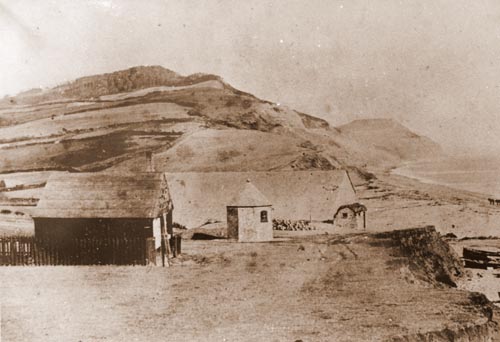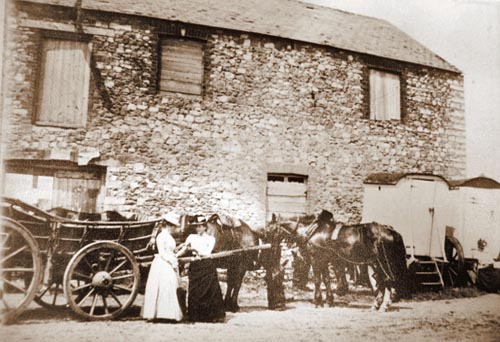Frean
Click on images or Charmouth Home to return back.
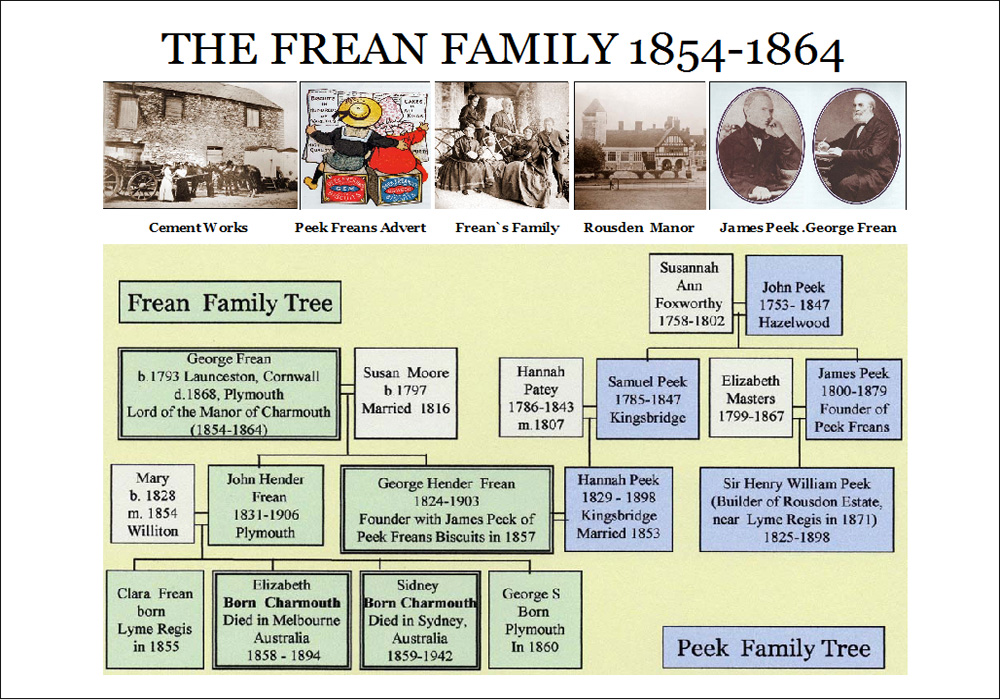
It is difficult to reason why he was to pay such a large sum for the Charmouth Manor Estate, but in the end it proved a good investment. Before the year was out he was to sell off Langmoor Manor from it to Ann Farwell Moly for £3400 and a parcel of fields to John Wilcocks for £2000. His name rarely appears in the records of Charmouth, for at this time the Censuses show him living in Drakes Place in Plymouth with his family. But one interesting piece of information is a Census record showing that his son John Fender Frean between 1856 and 1858 had 3 children one being born in Lyme Regis and the other two in Charmouth.. Harrods Directory for1855 describes George Frean as the Lord of the Manor and its main landowner. The deeds for the Manor of Charmouth show that he borrowed heavily against its value and by 1863 owed £3750. When it was eventually sold, his son George Hender Frean benefits from the sale and it no doubt helped with the finance of his other business, for he was the co-founder of the world famous biscuit firm - Peek Freans.
It is worthwhile studying the connections with the firm as there is a direct link in the neighbourhood with the other part of the name - Peek. For in 1871 Sir Henry Peek, M.P. for Mid Surrey established his Estate at Rousdon, near Lyme Regis. His father was James Peek who had run a successful Tea Importers in London and in 1857 wished to diversify after his sons refused to join the family business. He decided to set up a new business and contacted George Hender Frean who had married Hannah Peek, one of his nieces. Peek wrote to him explaining he would set up a biscuit factory for his sons if Frean would manager and partner, he accepted. Sadly it did not work out for the sons, but Peek Freans was to prosper under George Frean.
George Freans main focus was the setting up of a Cement Works near the existing Lime Kilns by the mouth of the River Char and the sea. His sister, Anna Frean had married Michael Morcom, described as a Mine Agent and was to have ten children. No doubt with a background in quarrying he was ideal for running a Cement Factory for George. By January 7th, 1863 the building we see today had been finished by the local builders, Pryers and a later auction catalogue reveals that Mr. Morcom of Plymouth had a 21 year lease and was paying £100 a year rent for it. But sadly the business never took off and may well have contributed to George Frean`s decision to sell his Estate to John Hawkshaw on January 1 1864 for £6000. This was precisely 10 years from the day he had bought his property in Charmouth from the Liddons.


George Hender Frean with his wife and Family
An early Advert for Peek Freans
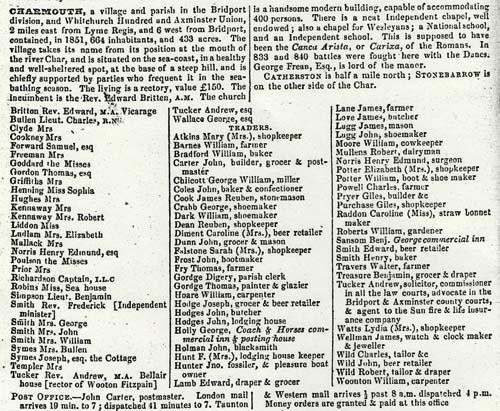
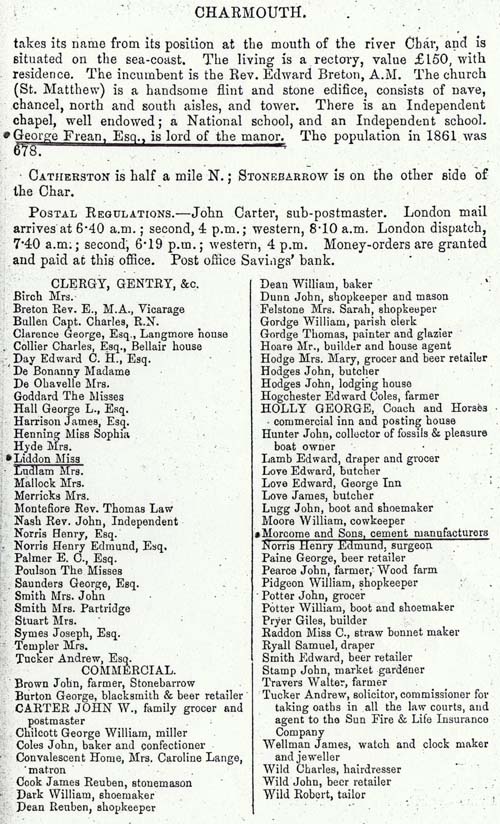
A directory for Charmouth for the year 1855 describing George Frean as its Lord of the Manor.
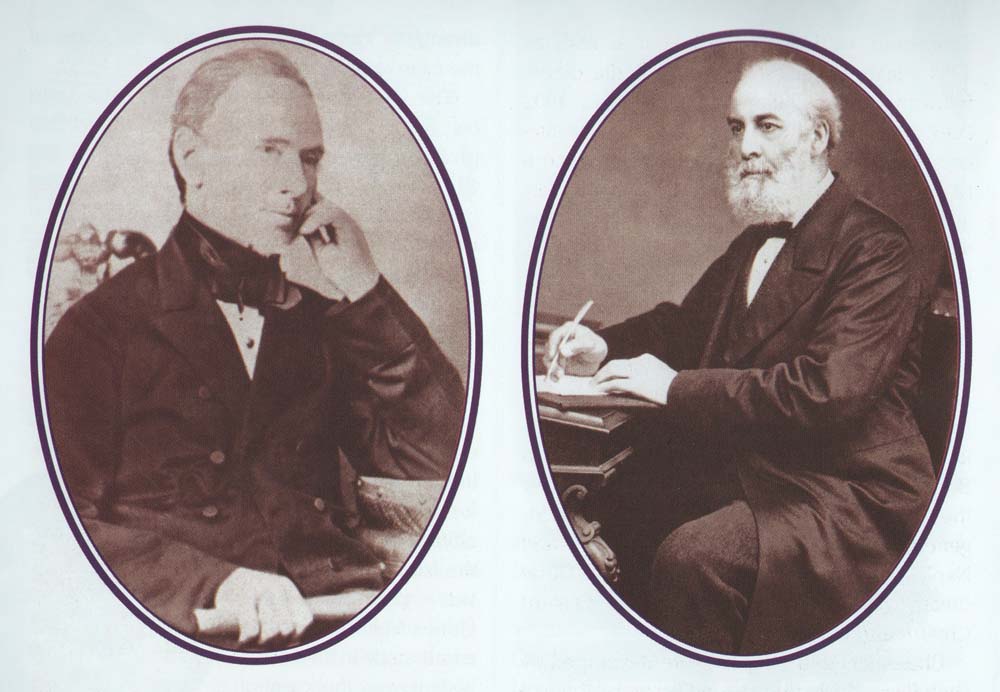
This picture shows James Peek and George Hender Frean who were to found the famous biscuit firm, Peek Freans in Bermondsey, London.
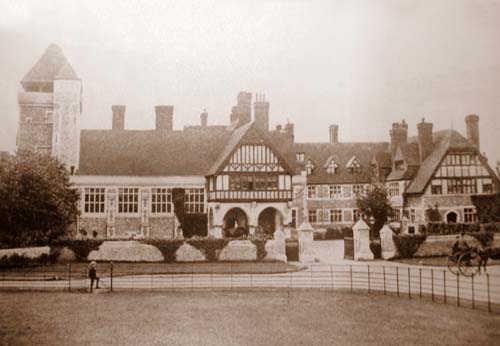
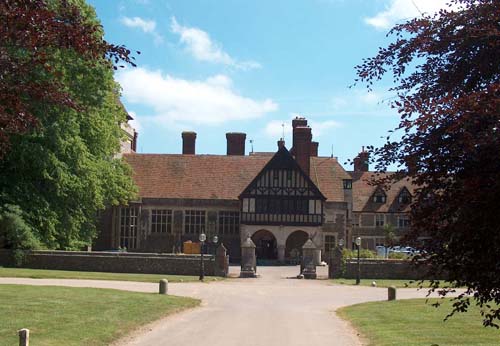
Sir Henry Peek, Estate at Rousdon, near Lyme Regis
The same view today.
